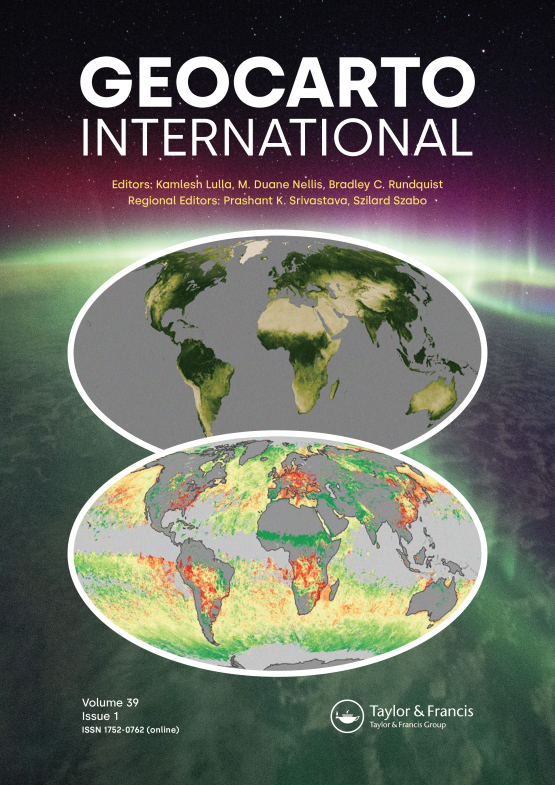Submit a Manuscript to the Journal
Geocarto International
For an Article Collection on
Mapping Flood Risk: The Intersection between GIS, Remote Sensing and Numerical Modelling
Manuscript deadline
31 May 2024


Article collection guest advisor(s)
Dr Guy Schumann,
Research and Education Department, RSS-Hydro, Dudelange L-3593, Luxembourg; School of Geographical Sciences, University of Bristol, Bristol BS8 1QU, UK
[email protected]
Dr Paolo Tamagnone,
Research and Education Department, RSS-Hydro, Luxembourg
[email protected]
Mapping Flood Risk: The Intersection between GIS, Remote Sensing and Numerical Modelling
Floods are becoming more and more costly in terms of both lives and economical losses, and also damage to infrastructure. In the last decade, floods have impacted nearly 800 million people and caused an estimated $300 billion in damage. These figures make floods, unfortunately, the most frequent and costliest weather-related disaster.
For flood disaster monitoring and mapping, remote sensing is an important source of information, and these observations could help counter a lack of field surveys and gauging stations, particularly in developing countries and remote areas of the planet. The incorporation of remotely-sensed data into hydraulic modeling, such as digital elevation models, river widths, flood extents, water levels, flow rates, and land cover, is expected to significantly advance our comprehension of, and ability to predict, such catastrophic events.
A growing amount of research has been conducted in recent years to better exploit the potential of both present and future satellite observations, from both government-funded and private missions, as well as many datasets from airborne sensors carried on airplanes and drones. In addition, the scientific community is increasingly demonstrating how remotely-sensed variables have the potential to play a crucial role in the calibration and validation of numerical models, which in turn significantly advance developments in real-time flood monitoring applications. These models are supported by a rapid increase both in the number of Earth observation data acquisitions, and the number of accessible datasets being made available.
We encourage the submission of articles related to flood monitoring and mapping through remotely sensed data, GIS applications and modelling including:
- Remote sensing data for flood hazard and risk mapping, including commercial satellite missions as well as airborne sensors (aircraft and drones);
- Remote sensing techniques to monitor flood dynamics;
- The use of remotely-sensed data for the calibration, or validation, of hydrological or hydraulic models;
- Data assimilation of remotely sensed data into hydrological and hydraulic models;
- Improvement of river discretization and monitoring based on Earth observations;
- Water level and flow rate estimation through remote sensing techniques;
- AI in flood hazard monitoring and prediction
Benefits of publishing open access within Taylor & Francis
Global marketing and publicity, ensuring your research reaches the people you want it to.
Article Collections bring together the latest research on hot topics from influential researchers across the globe.
Rigorous peer review for every open access article.
Rapid online publication allowing you to share your work quickly.
Looking to Publish your Research?
Find out how to publish your research open access with Taylor & Francis Group.
Choose open accessSubmission Instructions
We encourage the submission of articles related to flood monitoring and mapping through remotely sensed data, GIS applications and modelling including:
- Remote sensing data for flood hazard and risk mapping, including commercial satellite missions as well as airborne sensors (aircraft and drones);
- Remote sensing techniques to monitor flood dynamics;
- The use of remotely-sensed data for the calibration, or validation, of hydrological or hydraulic models;
- Data assimilation of remotely sensed data into hydrological and hydraulic models;
- Improvement of river discretization and monitoring based on Earth observations;
- Water level and flow rate estimation through remote sensing techniques;
- AI in flood hazard monitoring and prediction
All manuscripts submitted to this Article Collection will undergo desk assessment and peer-review as part of our standard editorial process. Guest Advisors for this collection will not be involved in peer-reviewing manuscripts unless they are an existing member of the Editorial Board. Please review the journal Aims and Scope and author submission instructions prior to submitting a manuscript.